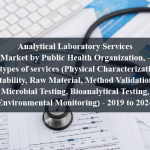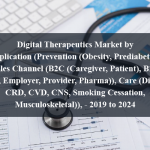OVERVIEW
The Medical Robots Market is currently valued at USD 16 billion in 2024 and will be growing at a CAGR of 16.1% over the forecast period to reach an estimated USD 33.8 billion in revenue in 2029. The market for medical robots is a dynamic and rapidly advancing sector within the realm of medical technology. These specialized robots cater to various medical needs, encompassing a wide range of functionalities that significantly enhance patient care and medical procedures. Surgical robots play a pivotal role in assisting surgeons during intricate procedures, offering precision and minimally invasive techniques that surpass human capabilities. Rehabilitation robots aid patients in their recovery process, providing personalized support for physical therapy and mobility training, thereby improving post-injury or post-surgery rehabilitation outcomes. Telepresence robots facilitate remote medical consultations, enabling healthcare providers to interact with patients in distant or underserved areas, thereby expanding access to healthcare services. Pharmacy robots automate medication dispensing and management, ensuring accuracy and efficiency while reducing medication errors and freeing up healthcare professionals’ time for direct patient care. Diagnostic robots leverage artificial intelligence and machine learning to analyze medical data and images, assisting in early disease detection and treatment planning. Furthermore, advancements in robotic prosthetics offer individuals with limb loss or mobility impairments enhanced mobility and functionality, improving their quality of life. Through the integration of advanced technologies such as AI, machine learning, and robotics, medical robots continue to revolutionize healthcare delivery, enhancing patient outcomes and streamlining medical procedures.
The market for medical robots is propelled by several key drivers that underscore its growth trajectory. Firstly, the increasing prevalence of minimally invasive surgical procedures is driving the demand for surgical robots, as they offer enhanced precision, reduced trauma, and quicker recovery times for patients. Secondly, the rising geriatric population globally is fueling the need for rehabilitation robots to assist in physical therapy and mobility support, addressing age-related health challenges and improving quality of life. Thirdly, advancements in artificial intelligence and machine learning are driving innovation in diagnostic robots, enabling faster and more accurate disease detection and treatment planning. Additionally, the growing emphasis on telemedicine and remote healthcare delivery is spurring the adoption of telepresence robots, facilitating access to healthcare services in remote or underserved areas. Lastly, regulatory support and favorable reimbursement policies are bolstering market growth by providing a conducive environment for investment and adoption of medical robotic technologies.
Table of Content
Market Dynamics
Drivers:
The market for medical robots is propelled by several key drivers that underscore its growth trajectory. Firstly, the increasing prevalence of minimally invasive surgical procedures is driving the demand for surgical robots, as they offer enhanced precision, reduced trauma, and quicker recovery times for patients. Secondly, the rising geriatric population globally is fueling the need for rehabilitation robots to assist in physical therapy and mobility support, addressing age-related health challenges and improving quality of life. Thirdly, advancements in artificial intelligence and machine learning are driving innovation in diagnostic robots, enabling faster and more accurate disease detection and treatment planning. Additionally, the growing emphasis on telemedicine and remote healthcare delivery is spurring the adoption of telepresence robots, facilitating access to healthcare services in remote or underserved areas. Lastly, regulatory support and favorable reimbursement policies are bolstering market growth by providing a conducive environment for investment and adoption of medical robotic technologies.
Key Offerings:
Medical robots offer a diverse range of key offerings aimed at revolutionizing healthcare delivery. Surgical robots provide surgeons with enhanced precision and control during minimally invasive procedures, reducing patient trauma and accelerating recovery. Rehabilitation robots aid patients in their recovery journey by providing personalized physical therapy and mobility support, improving functional outcomes and quality of life. Diagnostic robots leverage artificial intelligence and machine learning to analyze medical images and data, enabling faster and more accurate disease detection and treatment planning. Telepresence robots facilitate remote medical consultations and examinations, expanding access to healthcare services and connecting patients with specialists regardless of geographical barriers. Pharmacy robots automate medication dispensing and management, enhancing medication safety and efficiency in healthcare settings. Robotic prosthetics and exoskeletons offer individuals with limb loss or mobility impairments enhanced mobility and functionality, empowering them to lead more independent lives
Restraints :
Medical robots have made great strides and have many potential uses, but there are a number of obstacles preventing their mainstream use and integration into healthcare systems. Cost is still a major obstacle since medical robots can be expensive to initially purchase and maintain, which makes them inaccessible to smaller healthcare facilities and areas with little resources. Adoption is also hampered by worries about liability and safety, especially in light of AI-driven robots’ capacity for autonomous decision-making and the possibility of mistakes or malfunctions. The adoption of medical robots is further complicated by regulatory barriers and compliance standards, which call for extensive validation and approval procedures to guarantee patient safety and efficacy. The acceptance and application of robotic technologies in clinical practice may be further slowed by cultural hurdles and healthcare workers’ resistance to change. Furthermore, the realisation of medical robots’ full potential to improve patient care and healthcare delivery is hampered by the lack of interoperability between various robotic systems and the current healthcare infrastructure, which presents hurdles to smooth integration and data sharing. In order to overcome these obstacles, stakeholders from all facets of the healthcare ecosystem must work together to address issues of affordability, safety, regulations, and technology while promoting an innovative and accepting culture.
Regional Information:
• In North America, the market for medical robots is characterized by robust technological innovation and a strong emphasis on improving patient outcomes and healthcare efficiency. The region boasts a significant presence of key industry players and research institutions, driving advancements in surgical robotics, diagnostic imaging, and telemedicine technologies. The United States, in particular, leads the market with high adoption rates of surgical robots in major healthcare facilities, driven by favorable reimbursement policies and a growing demand for minimally invasive procedures. Additionally, Canada is witnessing increasing investments in medical robotics research and development, particularly in areas such as rehabilitation robotics and AI-driven diagnostic tools. Regulatory frameworks in North America prioritize patient safety and efficacy, although compliance requirements can pose challenges for market entry and product commercialization.
Recent Developments:
• In April 2023, Intuitive Surgical’s da Vinci SP system received US FD for a simple prostatectomy.
• In November 2022, an Indian startup SS Innovations launched SSI Mantra for soft tissue surgeries.
Key Players:
Intuitive Surgical, Inc., Stryker Corporation, Medtronic plc, Zimmer Biomet Holdings, Inc., Mazor Robotics Ltd. (acquired by Medtronic), Accuray Incorporated, Hansen Medical, Inc. (acquired by Auris Health, Inc.), Smith & Nephew plc, Renishaw plc, and Verb Surgical Inc. (a joint venture between Verily Life Sciences and Johnson & Johnson).
– The Medical Robots Market is expected to reach an estimated value of USD 33.8 billion in revenue by 2029.
2) What is the estimated CAGR of the Medical Robots Market over the 2024 to 2029 forecast period?
– The CAGR is estimated to be 16.1% for the Medical Robots Market over the 2024 to 2029.
3) Who are the key players in the Medical Robots Market ?
-Intuitive Surgical, Inc., Stryker Corporation, Medtronic plc, Zimmer Biomet Holdings, Inc., Mazor Robotics Ltd. (acquired by Medtronic), Accuray Incorporated, Hansen Medical, Inc. (acquired by Auris Health, Inc.), Smith & Nephew plc, Renishaw plc, and Verb Surgical Inc. (a joint venture between Verily Life Sciences and Johnson & Johnson).
4) What are the drivers for the Medical Robots Market ?
-The medical robot market is growing due to the increasing demand for minimally invasive surgical procedures, the geriatric population, advancements in artificial intelligence, telemedicine, and regulatory support. These factors drive the demand for precision, reduced trauma, quicker recovery times, and improved quality of life for patients. Telepresence robots are also gaining popularity in remote areas.
5) What are the restraints and challenges in the Medical Robots Market ?
– Medical robots are revolutionizing healthcare delivery by providing precision, control, and personalized support for patients. They aid in surgery, rehabilitation, diagnostics, telepresence, pharmacy, and robotic prosthetics. They reduce trauma, improve patient outcomes, and enable remote consultations, medication dispensing, and limb loss or mobility impairments. These advancements enhance patient care and independence.
6) What are the key applications and offerings of the Medical Robots Market ?
– Medical robots face challenges in widespread adoption due to cost, safety concerns, regulatory hurdles, resistance to change, and lack of interoperability. These factors limit access to smaller facilities and resource-constrained regions, and hinder the full potential of AI-driven robots in improving patient care. Collaborative efforts from stakeholders across the healthcare ecosystem are needed to overcome these restraints and foster innovation.
7) Which region is expected to drive the market for the forecast period?
– North America is expected to have the highest market growth from 2024 to 2029
Why Choose Us?
Insights into Market Trends: Global Market Studies reports provide valuable insights into market trends, including market size, segmentation, growth drivers, and market dynamics. This information helps clients make strategic decisions, such as product development, market positioning, and marketing strategies.
Competitor Analysis: Our reports provide detailed information about competitors, including their market share, product offerings, pricing, and competitive strategies. This data can be used to inform competitive strategies and to identify opportunities for growth and expansion.
Industry Forecasts: Our reports provide industry forecasts, which will inform your business strategies, such as investment decisions, production planning, and workforce planning. These forecasts can help you to prepare for future trends and to take advantage of growth opportunities.
Access to Industry Experts: Our solutions include contributions from industry experts, including analysts, consultants, and subject matter experts. This access to expert insights can be valuable for you to understand the market.
Time and Cost Savings: Our team at Global Market Studies can save you time and reduce the cost of conducting market research by providing comprehensive and up-to-date information in a single report, avoiding the need for additional market research efforts.












